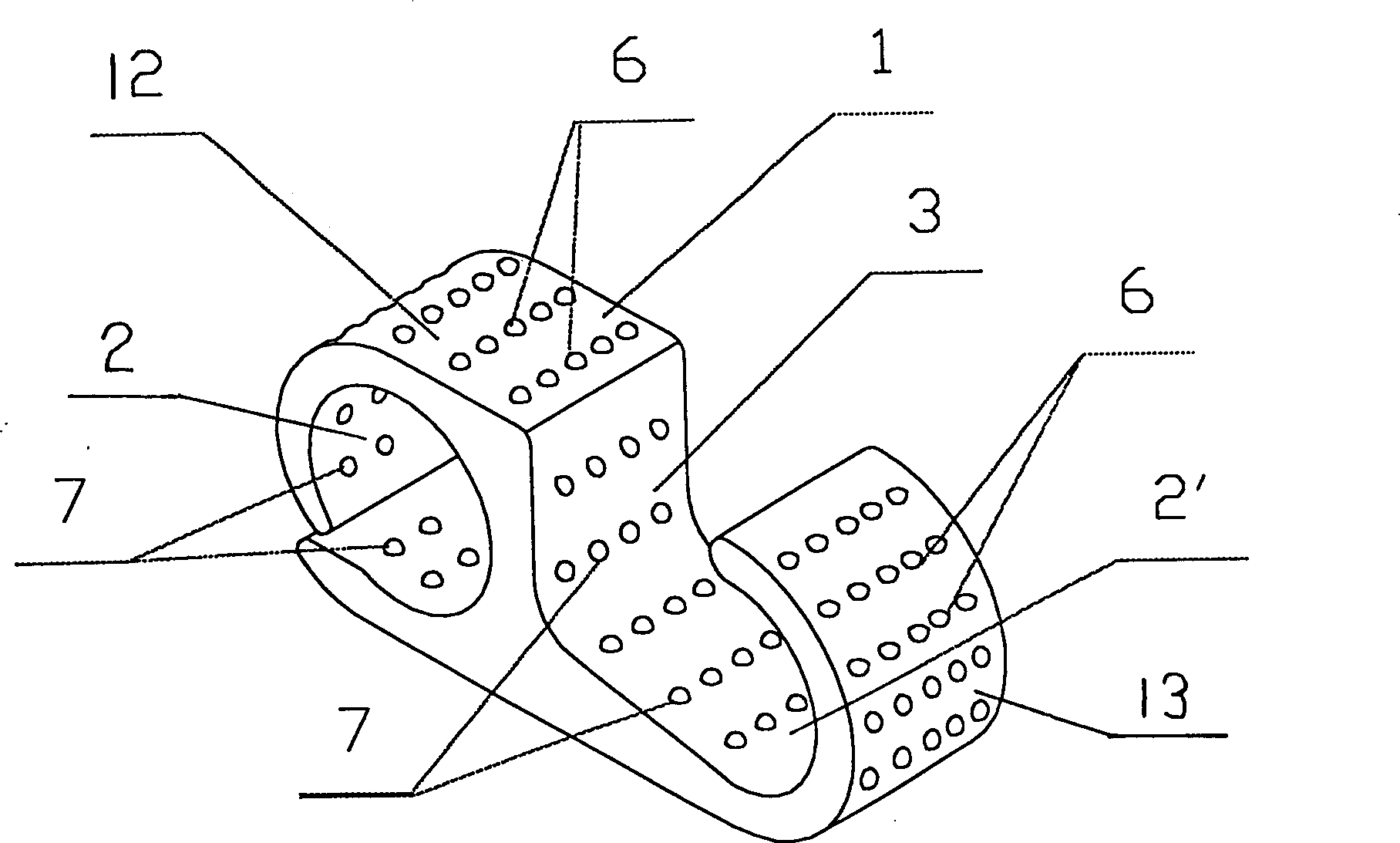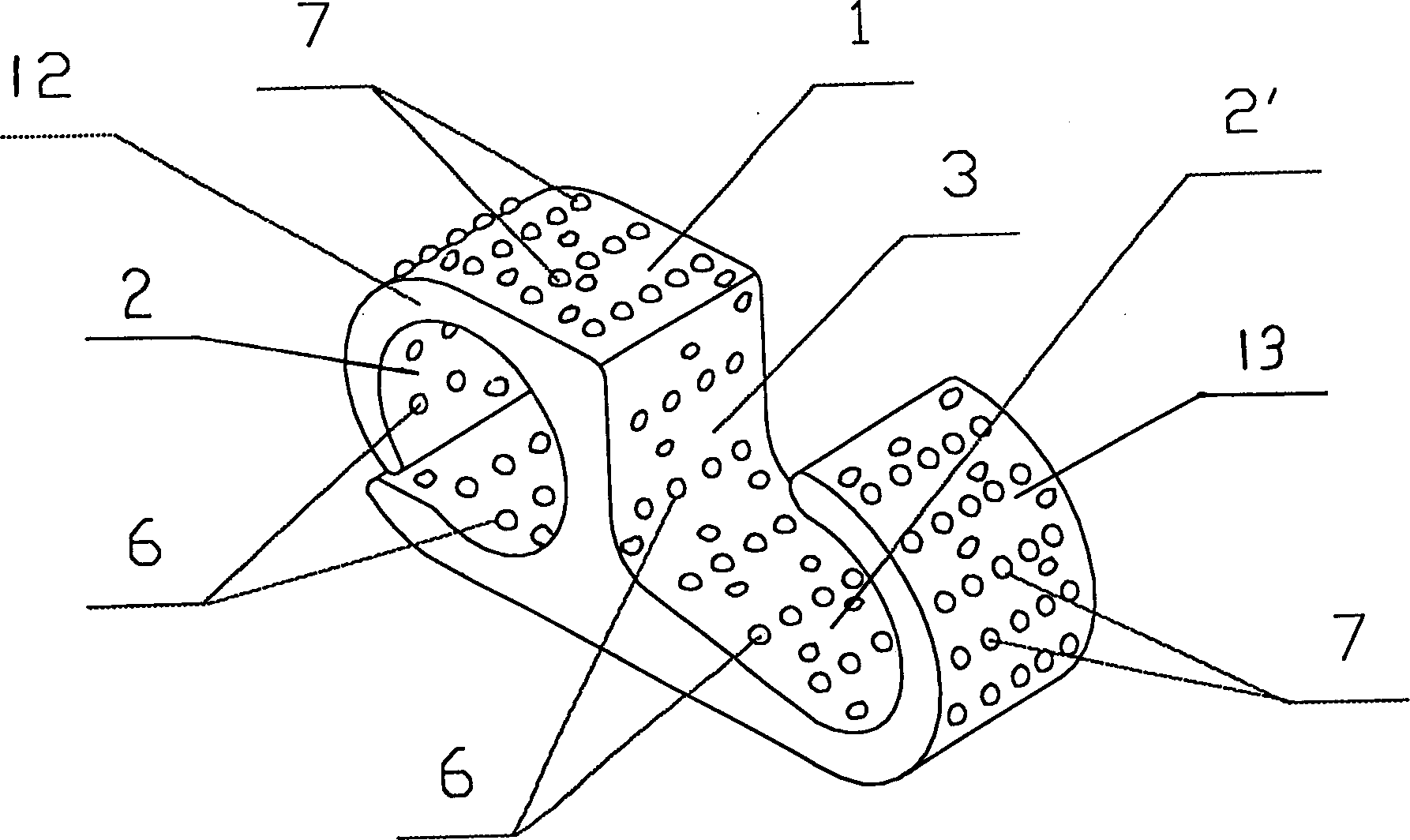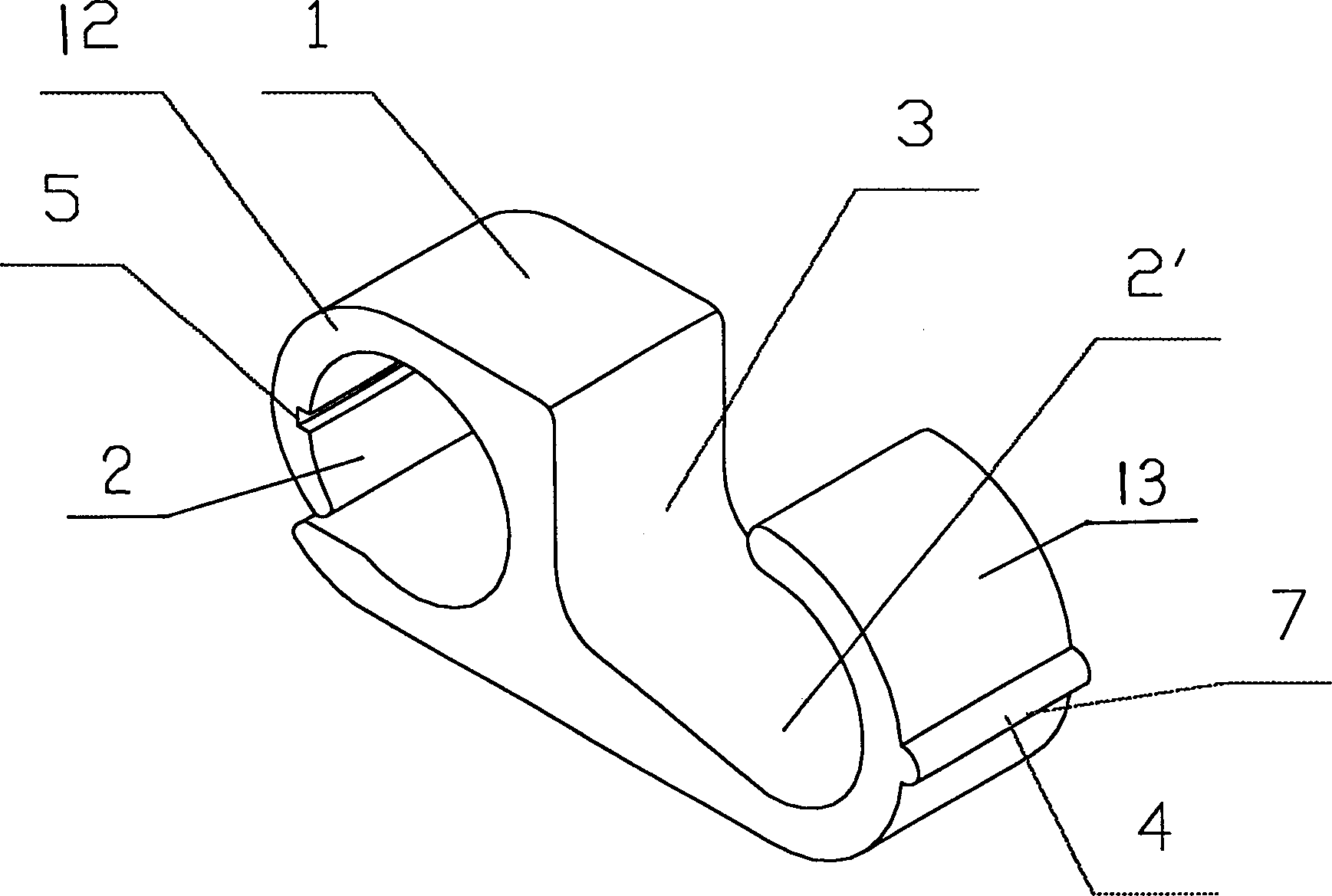Crimp-connection sleeve tube for power transmission lines
A technology for transmission and distribution wires and crimping sleeves, which is applied in the direction of connection where permanent deformation plays a role, and can solve the problems of reducing the protective layer, small pulling force, and broken cover, and achieve the effect of improving strength
- Summary
- Abstract
- Description
- Claims
- Application Information
AI Technical Summary
Problems solved by technology
Method used
Image
Examples
Embodiment 1
[0111] Embodiment one, such as figure 1 As shown, a crimping sleeve for transmission and distribution wires according to the present invention, the sleeve is a columnar base 1 with a cross-section of an 8-shaped opening, and two wire grooves 2 that are in contact with the wires are provided at both ends of the base 1 , 2', a partition 3 separating the two ends of the trench is provided between the two trenches, the one trench 2 is surrounded by a wire hook 12 that is approximately open and circular and the compartment 3, and the other The line groove 2' is surrounded by a round hook-shaped line hook 13 that is greater than, equal to, or less than a semicircle and an interlayer 3, forming a base body 1 that is a columnar body with a cross-section in the shape of an 8-shaped reverse opening. The o" part is two line grooves 2, 2', which are in the shape of through holes. On the inner surface of the two line grooves 2, 2' and the surface of the middle spacer layer 3, there are lo...
Embodiment 2
[0113] Embodiment two, such as figure 2 As shown, the difference between this embodiment and the previous embodiment is that the locking protrusions 7 are arranged on the outer surfaces of the wire grooves 2, 2', and the locking recesses 6 are arranged on the inner surfaces of the wire grooves 2, 2'. . At the beginning of crimping, the recesses on the inner surface will be closed early, which is beneficial to improve the compressive stress on the inner surface of the groove and contribute to the bending of the groove; the locking protrusion on the outer surface improves the strength and helps the end of the groove to stick The combined wire is beneficial to crimping and sealing with the wire, which can make the wire groove effectively cover the wire in the shape of wire diameter, and the wire clip is approximately cylindrical. When the locking protrusions and locking recesses are distributed in a point shape, the recesses and protrusions have the same effect.
Embodiment 3
[0114] Embodiment three, such as Figure 3A , 3B , 3C, 3D, 3E, and 3F, a crimping sleeve for power transmission and distribution lines according to the present invention, the sleeve is a columnar base 1 with an open cross-section, and two ends of the base 1 are provided with The two wire grooves 2, 2' that the wires contact are provided with an interlayer 3 separating the wire grooves at both ends between the two wire grooves. The wire groove 2 is composed of a wire hook 12 that is approximately open and circular and a spacer. Surrounded by layer 3, the other line groove 2' is surrounded by a round hook 13 that is larger than, equal to or smaller than a semicircle and an interlayer 3, forming a base 1 that is a column with a cross-section in the shape of an 8-shaped reverse opening Body, the "o" part of the 8 character is two line grooves 2, 2', which are in the shape of through holes; it also includes a locking groove 5 and a locking rod 4.
[0115] Such as Figure 3A As s...
PUM
 Login to View More
Login to View More Abstract
Description
Claims
Application Information
 Login to View More
Login to View More - R&D
- Intellectual Property
- Life Sciences
- Materials
- Tech Scout
- Unparalleled Data Quality
- Higher Quality Content
- 60% Fewer Hallucinations
Browse by: Latest US Patents, China's latest patents, Technical Efficacy Thesaurus, Application Domain, Technology Topic, Popular Technical Reports.
© 2025 PatSnap. All rights reserved.Legal|Privacy policy|Modern Slavery Act Transparency Statement|Sitemap|About US| Contact US: help@patsnap.com



